The Origin of Life?
This is a vexing question; perhaps the ultimate puzzle! It invokes wonder and intrigue for many, but for others it’s a question that invites derision and disbelief. Of course, we may never know the complete answer, or answers to the question “How Did Life Come About?“, but there is also no reason why science shouldn’t persist in asking it, in looking for the geological evidence, either here or in some other solar system, or devising experiments and models to help explain it. For all we know, it could be as simple an answer as it was to Richard Adams’ ultimate question in Restaurant At The End Of The Universe. The next two posts look at some scientific experiments that help us imagine how it might all have begun.
The oldest fossils
We begin the investigation by recognising the oldest known life forms – primitive, single cell cyanobacteria, are preserved in sedimentary rocks 3465 million years old (3.465 billion; the rock formation is referred to as the Apex Chert, in western Australia). They are associated with biogenic structures known as stromatolites that basically are stacked layers of ancient algal or microbial slime. There are reports of even older (almost 4 billion years) microbial fossils in rocks from Quebec, but the debate continues about whether they are actual fossils or abiogenic structures .
So we know the ‘when’ of some of the oldest life forms,BUT…
These ancient cells must have already contained all the things necessary for life: genetic codes, RNA and DNA, plus associated organic compounds like amino acids, proteins, lipids and the ability to reproduce. We also theorize that these cells eventually gave rise to all other life forms that subsequently evolved, including ourselves.
Even with these ancient life forms, we are still faced with the question “how did the earliest cells develop?” What processes led to the gathering together of all the appropriate proteins, the double helix DNA, and cell nucleii. We have yet to discover, and maybe never will, the complex non-living organic molecules and compounds that may have been the precursors to living cells. What was it that gave rise to cell-like structures that could replicate their genetic code and produce other cells? In other words how did non-living organic compounds and structures come
Most of the discussion and debate over the past couple of centuries has revolved around the formation of the kinds of complex molecules needed to get life moving – amino acids to proteins, proteins to RNA and DNA, the building blocks of genetic codes. Two popular ideas have emerged:
- Complex organic molecules, and possibly even life forms themselves, were delivered by comets and meteorites. We know that comets, other extra-terrestrial bodies, and even solar nebulae, can harbour in their structures a variety of organic compounds. 25 minutes after the (historic) landing on comet 67P/Churyumov-Gerasimenko, Philae Lander took a sniff (sample) of gas; the analysis indicated 16 organic compounds. However, none of the compounds were derived from biogenic (life) reactions. Of course, if life did arise somewhere other than earth, it still begs the question of where, how and when it began.
- The second idea, and probably one that gains more traction, invokes a home-grown origin of life, rather than arriving by some extra-terrestrial courier service. The general idea is that abiotic reactions became successively more complex; this is still rather vague because we still lack good mechanistic explanations that describe the transitions from abiotic complexity, to structures that can replicate, or reproduce.
One of the approaches to used to unravel some of these mysteries is chemical experiments. The rest of this post describes one of the classic, early set of experiments, the results published in 1953. The original scientific publication was quite unassuming and yet it set in motion a great deal of excitement and the impetus for more research. A second post on this topic will look at some recent experiments wherein each takes a slightly different and to some extent competing approach to the Origin of Life.
Some attempts to solve the puzzle
The idea of an abiotic origin of life (i.e. processes NOT involving living cells) was hinted at by Charles Darwin in 1871 in a letter to his good friend and prominent botanist, Joseph Hooker. Darwin imagined a “…warm little pond, with all sorts of ammonia and phosphoric salts, light, heat, electricity, etc. present, that a protein compound was chemically formed ready to undergo still more complex changes…”
A few people continued to speculate along Darwin’s line of thought, but it was Alexsandr Oparin, a Russian biochemist in the early 20thC, who developed a comprehensive hypothesis of the prebiotic origin of life. His ideas were first published in 1923, and later a book ‘The Origin of Life’ in 1936. He suggested that increasingly complex organic compounds developed from relatively simple molecules such as alcohols, ketones and organic acids. Eventually proteins formed via several complex reactions. All the reactions were abiotic (did not involve living cells). According to Oparin, accumulations of proteins ultimately led to self-replicating structures (cells).
In the early 1950s Stanley Miller, an organic chemistry researcher at University of Chicago, gave thought to the puzzle of how Oparin’s abiotic origins of life might be demonstrated. Miller had an inkling that some parts of the puzzle might be solved by experimentally recreating the atmospheric conditions on the ancient earth. His boss, Harold Urey, thought otherwise and suggested Miller work on meteorites. But Miller persisted and eventually Urey agreed. Call it serendipity, call it what you will, but Miller’s experimental results, when published in 1953, become front page news. The novel scientific experiments conducted by Miller (and Urey) provided the impetus for new experiments over subsequent decades.
Miller’s experiment involved taking what were then considered the basic ingredients of the ancient atmosphere – ammonia (NH3), water (H2O), methane (CH3) and hydrogen (H) and applying an energy source. He excluded oxygen from his primitive atmosphere. Potential energy sources included electrical pulses from lightning and direct UV light (remember that an absence of free oxygen also meant there would be no ozone layer to filter the sun’s UV light). He chose to use an electrical spark to simulate lightning.
His apparatus was pretty simple. A flask of water was boiled gently to release steam that mixed
with the methane, ammonia and hydrogen gases. The vapour passed between two electrodes that produced a continuous spark. The vapour and any products from reactions were condensed and returned to the water flask. After the first day water in the flask was “…noticeably pink…”; after a week the fluid was “…deep red and turbid.”
The results astounded even Miller. He had produced several amino acids including Alanine and Glycine (amino acids are the building blocks for proteins). The results showed that, under the experimental conditions, complex organic compounds that are important in all forms of life could be produced abiotically. This was a huge conceptual and experimental breakthrough. It is also important to remember that Stanley Miller did not embark on this quest to create artificial life. His primary aim was to show that Oparin’s hypothesis had scientific merit and in this he succeeded.
There is a postscript to this story
We now know that the earliest atmosphere on earth did not contain abundant ammonia, but mostly carbon dioxide, water, nitrogen, and some methane and sulphur dioxide. When Miller repeated his experiments in 1983 using these new ingredients, the results were pretty disappointing – a few simple organic compounds but no amino acids. Naysayers immediately pounced on this, arguing that abiotic processes were not important to initial life-forming processes. Fortunately for science, enough interest in this kind of experiment had been kindled, that other researchers devised new and as it turned out, successful experiments. Some of these experiments will be looked at in the next post.
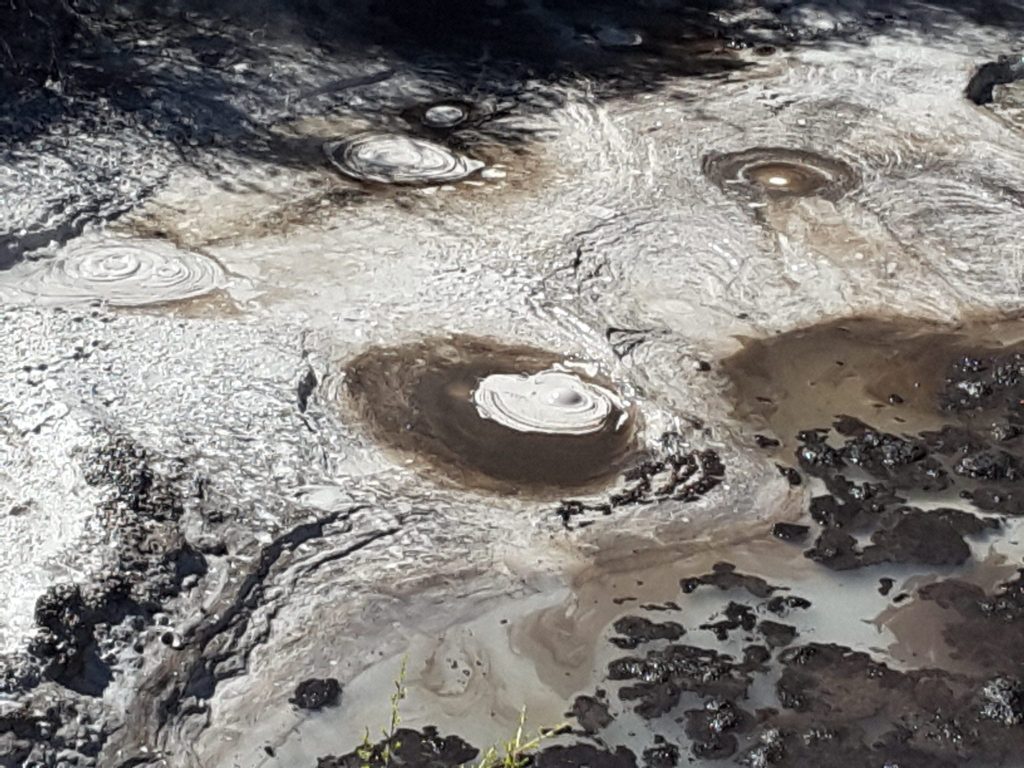

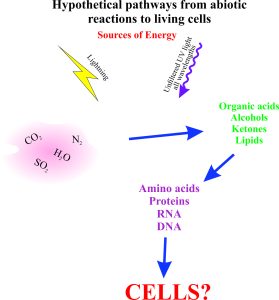
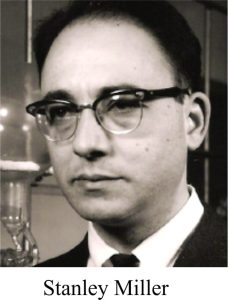
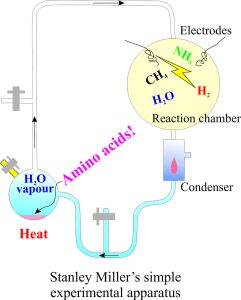
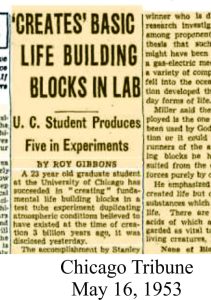


















3 thoughts on “The Ancient Earth 5. Life and all that… Where, How, When? Part 1”
Since “matter can neither be created nor destroyed” where did the comets and or other bits and pieces come from Dr. Ricketts?
Matter can be converted to energy – hence e = mc(sqrd). As for the comets etc, probably from the same solar nebula material that the sun and planets came from eh
Pingback: serial keys for Buildbox Crack